Environmental Health Topics for Child Care Providers
Learn about major environmental health issues in child care settings and find resources to promote and maintain environmental health.
- Asthma
- Chemical Hazards
- Drinking Water
- Environmental Tobacco Smoke
- Green Cleaning
- Indoor Air Quality
- Mercury
- Mold
- Pesticides/Integrated Pest Management (IPM)
- Plastics
- Lead
Asthma
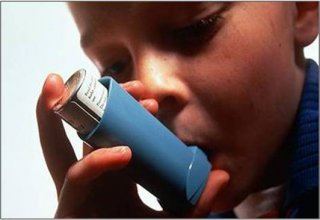
Asthma is a serious and sometimes life-threatening chronic disease that affects the health and quality of life of 25 million Americans, including seven million children. Poor and minority children are more likely to have asthma and their health outcomes are worse. Black children are twice as likely to be hospitalized and four times as likely to die from asthma as white children.
Allergens and irritants in child care and other indoor settings play a significant role in triggering asthma attacks. The tools in this section provide information on how to reduce children's exposure to common asthma triggers including secondhand smoke, dust mites, molds, cockroaches, and other pests.
Resources
- Centers for Disease Control - Asthma
- Respiratory Health Association – Asthma-Friendly Childcare Toolkit
- U.S. Environmental Protection Agency – Learn about Asthma and Manage Asthma Triggers
Chemical Hazards
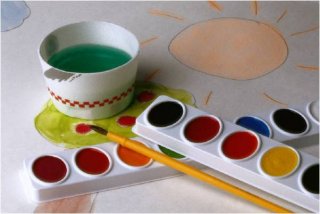
A child born today will grow up exposed to more chemicals than a child from any other generation in our nation's history. Of the 85,000 synthetic chemicals in commerce today, only a small fraction has been tested for toxicity on human health.
A 2005 study found 287 different chemicals in cord blood of 10 newborn babies - chemicals from pesticides, fast food packaging, coals and gasoline emissions and trash incineration. Children are more vulnerable to toxic chemicals because their bodies are still growing and developing. This section of the website provides information you can use to minimize exposure to potentially toxic chemicals found in items including some plastic toys, flame retardants, art supplies, and non-stick cookware.
Resources
Drinking Water
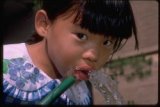
Young children are at particular risk for exposure to contaminants in drinking water because, pound for pound, they drink more water than adults (including water used to prepare formula), and because their immature body systems are less efficient at detoxification. Exposure to lead in drinking water is a serious health concern, especially for young children and infants since elevated lead levels in children may result in delays in physical or mental development, lower IQ , and even brain damage.
To assist child care centers with implementation of programs and policies to reduce exposure to contaminants, such as lead in drinking water, EPA uses the 3Ts concept: Training, Testing, Telling. The tools in this section provide information on the steps that can be taken to reduce such exposures.
Resources
- Brochure: Drinking Water Information for Health Care Providers
- Lead in Drinking Water in Schools and Childcare Facilities
Environmental Tobacco Smoke
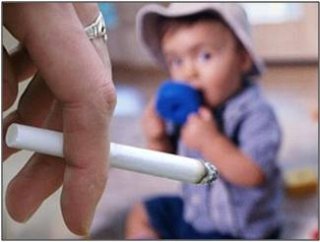
Environmental tobacco smoke (ETS), otherwise known as secondhand smoke, is a mixture of the smoke given off by the burning end of a cigarette, or cigar, and the smoke exhaled by smokers. Secondhand smoke contains more than 4,000 substances, several of which are known to cause cancer.
Children are particularly vulnerable to the effects of secondhand smoke because they are still developing physically, have higher breathing rates than adults, and have little control over their indoor environment, including where and when the adults in their world choose to smoke. Exposure to secondhand smoke can cause asthma, and places infants and children at increased risk for Sudden Infant Death Syndrome (SIDS), pneumonia, bronchitis, and middle ear infections. This section of the website provides information on how to reduce or even eliminate children's exposure to ETS in child care settings.
Green Cleaning
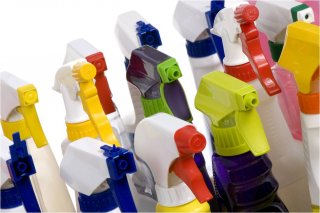
Green cleaning refers to the use of cleaning products that have a reduced impact on human health and the environment, often because they have been re-formulated to eliminate the most potentially toxic ingredients. Child care providers recognize the important role that cleaning, sanitizing, and disinfecting can have in maintaining an attractive, safe, hygienic environment and reducing the spread of germs. But, it is important to know when cleaning is good enough and when sanitization or disinfection, which may involve harsher chemicals, is called for.
And, given the growing set of state requirements promoting green cleaning in early learning environments and schools and increased availability of green cleaning products, it is important for child care providers to know how to identify and use green cleaning products. The following links provide information about the dangers of cleaning products and the steps that can be taken to utilize less toxic alternatives in a childcare setting.
Resources
- Informed Green Solutions - Cleaning for Health Fact Sheets
- University of California, San Francisco – Center for Child Care Health
- U.S. Department of Agriculture, Extension - Disinfect Child Care Surfaces with a Bleach and Water Solution
- U.S. Environmental Protection Agency
Indoor Air Quality
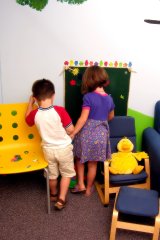
There are so many sources of indoor air pollution in childcare facilities that the air is considered to be two to five times more polluted than outdoor air. Common sources of indoor air pollution include combustion sources such as oil, gas, kerosene, coal, wood, and tobacco products; building materials and furnishings as diverse as deteriorated, asbestos-containing insulation, wet or damp carpet, and cabinetry or furniture made of certain pressed wood products; products for household cleaning and maintenance, personal care, or hobbies; central heating and cooling systems and humidification devices; and outdoor sources such as radon, pesticides, and outdoor air pollution.
Children are more susceptible to the effects of contaminated air because they breathe in more oxygen relative to their body weight than adults. The following links provide information about indoor air quality and the steps that can be taken to improve indoor air quality in a childcare facility.
Resources
- Arizona Department of Environmental Quality - Indoor Air Quality Issues for Child Care Facilities: Train the Trainer Guide (PDF)(48 pp, 2.8 MB)
- University of California, San Francisco - California Childcare Health Program
Mercury
Elemental mercury, a shiny, silver-white metal that is liquid at room temperature, is used in older fever thermometers, compact fluorescent light bulbs (CFLs), and some electrical switches. Children can be exposed to elemental mercury vapor when products that contain mercury break and expose mercury to the air, particularly in poorly-ventilated spaces.
Mercury can affect the nervous system. Because infants and children are still developing, they are particularly sensitive to the effects of mercury on the nervous system. The following links provide information about the health effects of mercury exposure and steps that can be taken to prevent exposure to mercury in childcare facilities, including what to do when a thermometer or a CFL breaks.
- Do not use mercury thermometers. Learn more about how to tell if there is mercury in a fever thermometer.
- Recycle products that contain mercury.
- If you have a mercury spill:
- When a CFL or other fluorescent bulb breaks
- When a mercury thermometer breaks
- When the amount spilled is more than what's in a thermometer
- Never use a vacuum cleaner or broom to clean. It will spread the mercury.
- Never pour mercury down a drain.
Resources
- Health effects
- Mercury in CFLs
- Mercury in thermometers
- Mercury in other consumer products
- Don't Mess with Mercury (U.S. ATSDR)
- Notice from FloridaHealth.gov alerting daycare providers to the potential dangers of mercury spilled from glass thermometers, blood pressure cuffs and other mercury-containing devices (PDF)
Mold
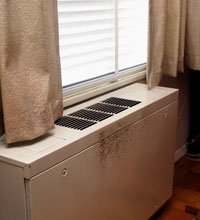
Mold is a fungus that thrives indoors when excessive moisture or water accumulates indoors or when moisture problems remain undiscovered or un-addressed. There are molds that can grow on wood, paper, carpet, and foods. There is no practical way to eliminate all mold and mold spores in the indoor environment. The way to control indoor mold growth is to control moisture.
Mold needs to be controlled in childcare settings to avoid possible health impacts for infants and children, including allergic reactions, asthma, and other respiratory issues. The following links provide information about health effects associated with exposure to mold and steps you can take to prevent mold growth in a childcare facility.
Resources
- Mold Remediation in Schools and Commercial Buildings
- University of California, San Francisco - California Childcare Health Program - Integrated Pest Management Toolkit for Early Care and Education Programs
Pesticides/Integrated Pest Management (IPM)
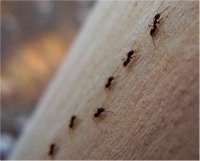
Exposure to pests such as cockroaches, rodents, ants, and stinging insects in childcare centers may place children at risk for disease, asthma attacks, bites, and stings. Improper use of pesticides can also place children at risk. A recent study of pesticide use in child care centers revealed that 75% of centers reported at least one pesticide application in the last year. Several factors increase both children's exposures and their vulnerability to these exposures compared to adults. Children spend more time on the floor, where residues can transfer to skin and be absorbed.
Young children also frequently place their hands and objects in their mouths, resulting in non-dietary ingestion of pesticides. Children are less developed immunologically, physiologically, and neurologically, and therefore may be more susceptible to the adverse effects of chemicals and toxins. There is increasing evidence of adverse effects of pesticides on young children, particularly on neurodevelopment. The following links provide information about the health effects associated with exposure to pests and pesticides and the steps that can be taken to use integrated pest management strategies in childcare facilities.
Resources
- California Department of Pesticide Registration
- Argentine Ants: Spanish Version(2 pp, 196 KB)
- Bed Bugs: Spanish Version(2 pp, 250 KB)
- Child Day Care Facilities IPM
- Cockroaches: English Version(2 pp, 313 KB, About PDF) , Cockroaches: Spanish Version(2 pp, 212 KB)
- Keep Pests Out of Your Child Care Center (English Version)(2 pp, 323 KB)
Keep Pests Out of Your Child Care Center (Spanish Version)(2 pp, 196 KB) - Mice and Rats: Spanish Version(2 pp, 323 KB)
- What to Do About Bugs, Weeds, and Other Pests: Child Care Pest Information Series
- EPA - Integrated Pest Management (IPM) in Child Care: Protecting our Children from Pests and Pesticides
- Penn State Extension - IPM for Child Care and Early Learning Environments
- Pesticide and Toxic Substances Exposure Awareness Project - IPM in Child Care Centers
- University of California, San Francisco - California Childcare Health Program
- University of Florida - The School IPM Listserv
Plastics
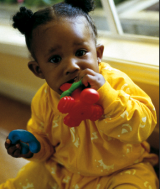
Certain types of plastics contain chemicals such as phthalates, bisphenol A (BPA), polyvinyl chloride (PVC), and polystyrene that may be toxic to children. These plastics can be found in baby bottles, sippy cups, teething rings, pacifiers, and toys. When these items are in a child's mouth or when they are heated (such as in a microwave), children can be exposed to harmful chemicals that have the potential to mimic or suppress hormones and disrupt normal growth and development. The following links provide information about the dangers of these types of plastics and the steps that can be taken to prevent toxic contamination as a result of plastics in a childcare facility.
Resources
- Children's Environmental Health Network - Eco-Healthy Child Care: Plastics and Plastic Toys
- Mount Sinai's Children's Environmental Health Center - Video by Dr. Maida Galvez Speaking on Plastics and Childhood Exposure(9:50 Run Time)
- University of CA, San Francisco - California Childcare Health Program - Banning Chemicals Called Phthalates in Childhood Products(1 pp, 81 K, PDF)
Lead
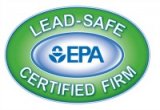
Lead is particularly dangerous to children because their growing bodies absorb more lead than adults do and their brains and nervous systems are more sensitive to the damaging effects of lead. Babies and young children can also be more highly exposed to lead because they often put their hands and other objects that can have lead from dust or soil on them in their mouths.
Children may also be exposed to lead by eating and drinking food or water containing lead or from dishes or glasses that contain lead, inhaling lead dust from lead-based paint or lead contaminated soil, or from playing with toys with lead paint. The following links provide information about the dangers of lead poisoning and the steps that can be taken to prevent lead poisoning in a childcare facility.
Resources
- Connecticut Department of Public Health - Lead Information for Child Care Providers
- Children's Environmental Health Network - Eco-Healthy Child Care Fact Sheets - Lead
- Renovation, Repair, and Painting Rule - For Operators of Child Care Facilities
